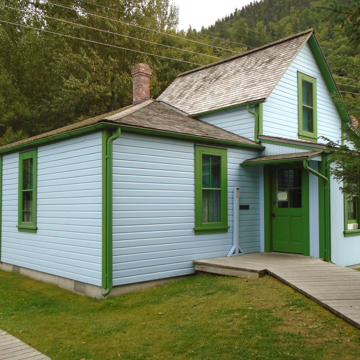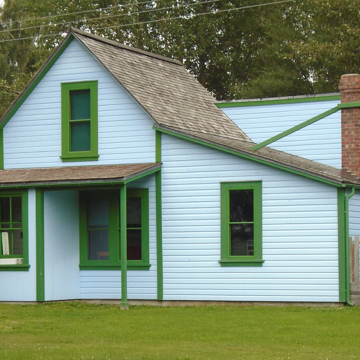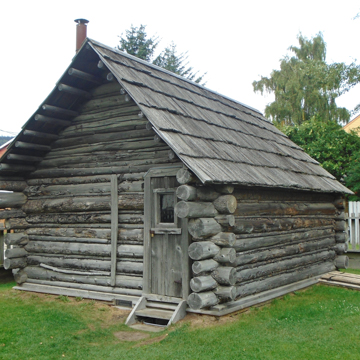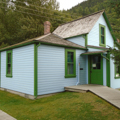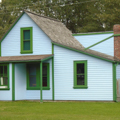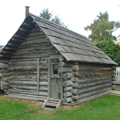The Moore cabin and house, at one time incorporated into the same structure, illustrate the typical if quixotic evolution of a frontier building, in this case, the earliest structure in Skagway. Capt. William Moore (1822–1909) established a homestead on the site of the future town of Skagway in 1887. An ardent backer of the White Pass route to the Yukon and foreseeing that a gold strike would eventually occur there, in 1888 Captain Moore built a one-story log cabin measuring 16 feet by 16 feet. The saddle-notched cabin had a gable roof covered with shakes.
By 1897, the Alaska and Northwest Territories Trading Company had built a sawmill in Skagway as part of its support for the White Pass route. In the summer of that same year, with sawn lumber now available, Ben Moore added a 14-foot-by-16-foot one-and-a-half-story wood-framed addition to the front of his cabin; he made still other additions in the fall and winter. In 1900, however, the Moores detached the log cabin and moved it to its present site 50 feet north of the house, placing it on a wood post foundation. Apparently, they already foresaw its tourist potential as the first cabin in Skagway.
The wood-framed house continued to grow and was inhabited by Ben Moore until he left Alaska in 1906. Except for the front porch, which dates from 1914, the house looks much as he left it, a one-and-a-half-story core surrounded by one-story, shed- and hip-roofed additions. Although not neat, the house illustrates the random growth typical of early buildings not only in Alaska but also throughout frontier America. The cabin has been restored and placed on a new foundation by the National Park Service, which plans to restore the house as well.








